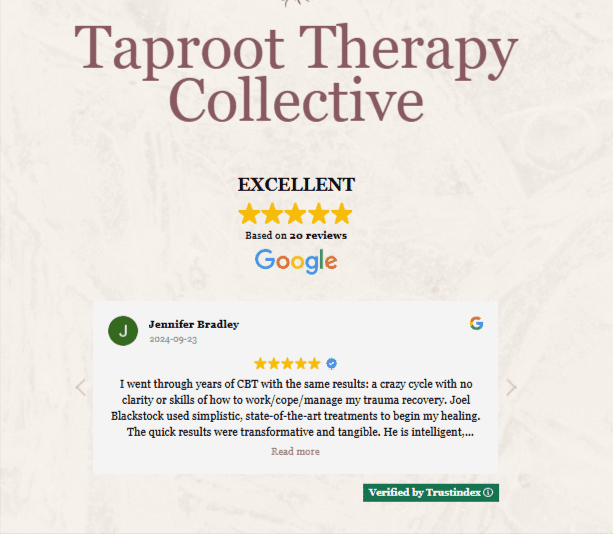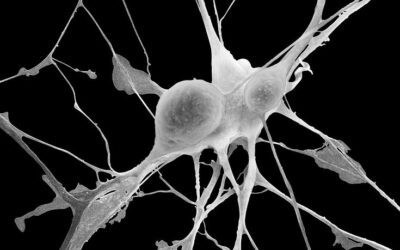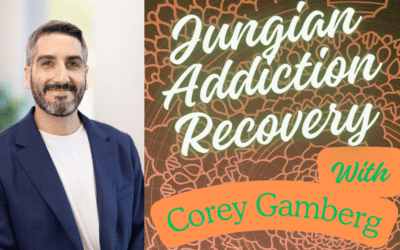 You’re sitting in your car after another sleepless night, phone in hand, typing “counselor near me” into Google for the fifth time this week. The results are overwhelming – dozens of smiling faces, all promising to help, most with 4.8 stars or higher. You click on the one with the most reviews, the one everyone says is “the best,” and book an appointment. Six sessions later, you’re wondering why you feel worse than when you started.
You’re sitting in your car after another sleepless night, phone in hand, typing “counselor near me” into Google for the fifth time this week. The results are overwhelming – dozens of smiling faces, all promising to help, most with 4.8 stars or higher. You click on the one with the most reviews, the one everyone says is “the best,” and book an appointment. Six sessions later, you’re wondering why you feel worse than when you started.
Here’s what no one tells you about finding a counselor: the highest-rated therapist in your area might be the absolute wrong fit for your brain. That five-star counselor who changed your coworker’s life could leave you feeling misunderstood, frustrated, and ready to give up on therapy altogether. The problem isn’t you, and it might not even be the therapist. The problem is that we’ve been taught to shop for mental health care like we shop for restaurants – by popularity and reviews – when we should be matching therapeutic approaches to how our individual minds actually work.
The truth about mental health treatment is far more nuanced than what any rating system can capture. Your brain is unique, shaped by your experiences, your trauma, your culture, your family system, and even your learning style. The way you process emotions, store memories, and make sense of the world is distinctly yours. A therapeutic approach that feels like coming home to one person might feel like speaking a foreign language to another.
This isn’t about good therapists versus bad therapists. Most counselors genuinely want to help, and most are competent in their chosen modalities. This is about understanding that therapy isn’t one-size-fits-all, and the sooner we abandon that myth, the sooner people can find the help that actually helps.
The Myth of the “Best” Counselor
Let’s dismantle this idea once and for all: there is no universally “best” counselor. There are counselors who are the best for specific people with specific needs at specific times in their lives. The therapist who skillfully guided your best friend through her divorce might be completely wrong for your anxiety. The counselor who helped your brother process his ADHD might leave you feeling unheard in your grief.
Think about it this way – you wouldn’t expect the same medication to work for every person with high blood pressure. Bodies respond differently to different chemicals. Brains respond differently to different therapeutic interventions. Yet somehow, we’ve created this narrative that good therapy looks the same for everyone: you talk, they listen, you have breakthroughs, you feel better.
The reality is much more complex. Some people need to talk their way to clarity. Others need to feel their way through their bodies. Some need concrete tools and homework assignments. Others need space to simply exist without judgment. Some people’s trauma lives in their nervous system and can’t be reached through conversation alone. Others carry their pain in stories that need to be witnessed and rewritten.
When we chase after the “best” counselor based on reviews, we’re often chasing after someone who is very good at one particular style of therapy. If that style happens to match your needs, wonderful. But if it doesn’t, you might find yourself in the confusing position of seeing a supposedly excellent therapist while feeling like therapy “doesn’t work” for you.
I’ve seen this play out countless times. A client comes in defeated, saying they’ve tried three different highly-recommended therapists and nothing helped. They wonder if they’re beyond help, too broken, or just not trying hard enough. Then we discover they’ve been seeing cognitive-behavioral therapists when what they really needed was somatic work. Or they’ve been in psychodynamic therapy when they needed solution-focused interventions. It’s like they’ve been trying to use a hammer when they needed a screwdriver – the tool wasn’t wrong, it just wasn’t the right tool for their particular situation.
Your friend’s life-changing therapist might have saved them because that therapist’s approach perfectly matched their needs. Maybe your friend processes analytically and thrived with CBT worksheets. But if you process emotionally and intuitively, those same worksheets might feel like torture. Maybe your coworker needed someone to challenge their thoughts, but you need someone to help you feel your feelings. These aren’t character flaws or signs that you’re doing therapy wrong. These are normal variations in how human beings heal.
How Different Minds Need Different Approaches
Your brain has its own operating system, developed over years of experiences, relationships, and survival strategies. Some of us learned early on to think our way out of problems. Others learned to feel deeply and trust their gut. Some of us need to move and do to understand. Others need to visualize and imagine. These aren’t just preferences – they’re fundamental differences in how we process and integrate information.
If you’re an analytical processor, you probably love understanding the why behind everything. You want to map out patterns, identify cause and effect, and create logical frameworks for understanding your problems. Your brain lights up when things make sense, when you can categorize and organize your experiences into neat mental files. You might find comfort in understanding the neuroscience behind your anxiety or the childhood origins of your relationship patterns.
For analytical processors, Cognitive-Behavioral Therapy often feels like coming home. CBT speaks your language – it’s about thoughts creating feelings creating behaviors. It offers worksheets, thought logs, and evidence-based interventions. You can track your progress, measure your symptoms, and see concrete proof that you’re getting better. Solution-focused therapy might also resonate, with its emphasis on practical problem-solving and measurable goals.
But here’s where the counselor-matching gets tricky. If you’re an analytical processor who ends up with a purely emotion-focused therapist who wants you to “just feel” without explaining why, you might feel lost at sea. You might sit there thinking, “But WHY do I feel this way? What’s the mechanism? What’s the solution?” without getting the cognitive framework you need to feel safe exploring emotions.
If you’re an emotional processor, your world is painted in feelings first, thoughts second. You might struggle to explain logically why something bothers you – you just know in your bones that it does. Your emotions aren’t just reactions; they’re a form of intelligence, giving you information about the world that can’t be captured in words or worksheets. You might find that you know things before you understand them, feel truths before you can articulate them.
Emotional processors often thrive in experiential therapies. Gestalt therapy, with its emphasis on present-moment awareness and embodied experience, might feel like finally being seen. Emotion-Focused Therapy (EFT) can help you navigate the rich landscape of your feelings without trying to logic them away. Somatic therapies acknowledge that your emotions live in your body, not just your head, and that healing happens through feeling, not just understanding.
When emotional processors end up with heavily cognitive therapists, they might feel like they’re being asked to translate their experience into a language that doesn’t quite fit. All those CBT worksheets might feel like trying to capture the ocean in a teacup. You might know the “right” answers intellectually but still feel unchanged at your core.
If you’re a creative or intuitive type, your healing might come through metaphor, symbol, and imagination. Your unconscious speaks in dreams and images. You might understand your depression better through painting it than talking about it. Your insights come in flashes of recognition, in synchronicities, in the space between words.
Jungian therapy was made for minds like yours. Working with archetypes, dreams, and the collective unconscious can feel like finally having a map for the territory you’ve been exploring alone. Art therapy, music therapy, and psychodrama offer languages beyond words. Transpersonal approaches acknowledge the spiritual dimensions of your experience without pathologizing them.
The tragedy is when creative, intuitive types end up in highly structured, manualized treatments that feel like cages. You might be able to comply with the homework, fill out the forms, but feel like your actual self – the part that needs healing – isn’t even in the room.
If you’re action-oriented, sitting and talking for fifty minutes might feel like torture. Your body needs to move to think. You understand through doing, not discussing. You might pace while you process or need to work with your hands while you talk. Traditional talk therapy might feel stagnant, like you’re spinning wheels without getting traction.
For action-oriented individuals, somatic therapies can be revolutionary. Brainspotting uses eye positions to process trauma. EMDR involves bilateral stimulation. Somatic Experiencing helps you complete interrupted defensive responses. Walk-and-talk therapy gets you moving while processing.
When action-oriented people are forced into traditional talk therapy settings, they might feel trapped, restless, or checked out. It’s not resistance – it’s a mismatch between their processing style and the therapeutic approach.
Understanding Core Therapy Modalities
Now let’s dive deep into what these different therapeutic approaches actually look like in practice, beyond the alphabet soup of acronyms and theoretical jargon. Understanding these modalities isn’t about becoming an expert – it’s about recognizing what might resonate with your particular way of being in the world.
Cognitive-Behavioral Therapy (CBT) is the Swiss Army knife of the therapy world – practical, versatile, and evidence-based. In CBT, you and your therapist become detectives, investigating the thoughts that drive your emotions and behaviors. You might spend sessions examining thoughts like “Everyone thinks I’m stupid” and testing them against reality. Is it really everyone? How do you know what they think? What evidence supports or contradicts this belief?
CBT homework is a feature, not a bug. You might track your moods, practice thought-stopping techniques, or gradually expose yourself to feared situations. There’s something deeply empowering about CBT’s message: you might not control what happens to you, but you can control how you think about it. For someone whose anxiety spirals from catastrophic thinking, CBT offers concrete tools to interrupt the spiral.
But CBT has its shadows. If your problems stem from systemic oppression, CBT’s focus on changing your thoughts might feel like gaslighting. If your depression comes from unprocessed grief, analyzing your “cognitive distortions” might feel like missing the point. And if your trauma lives in your body, all the thought work in the world might not touch the place where healing needs to happen.
Psychodynamic therapy is the descendant of Freud’s psychoanalysis, evolved and modernized but still interested in the unconscious forces shaping your life. Here, the relationship with your therapist becomes a laboratory for understanding all your relationships. That frustration you feel when your therapist won’t give you advice? That might be the same frustration you felt with an emotionally unavailable parent. The way you try to please your therapist? That might mirror how you’ve learned to survive in relationships.
Psychodynamic therapy trusts that symptoms have meaning. Your panic attacks aren’t just misfiring neurons – they might be your body’s way of expressing something that couldn’t be said. Your relationship patterns aren’t just bad habits – they’re strategies you developed for good reasons, even if those reasons no longer apply. This approach offers profound insights into why you are the way you are.
The challenge with psychodynamic therapy is that insight doesn’t always equal change. You might understand perfectly why you choose unavailable partners – the ways it recreates your relationship with a distant father – but still find yourself drawn to the same types. And for someone in crisis who needs immediate coping strategies, exploring childhood dynamics might feel like a luxury they can’t afford.
Humanistic therapies – like Person-Centered Therapy or Gestalt – believe in your inherent wisdom and capacity for growth. The therapist isn’t the expert on your life; you are. They create conditions for your natural healing processes to unfold: unconditional positive regard, empathy, and genuine presence. In Gestalt therapy, you might have conversations with empty chairs, giving voice to different parts of yourself or unfinished business with others.
This approach can be profoundly healing for anyone who’s been told they’re too much, not enough, or need fixing. There’s something revolutionary about a therapist who trusts your process, who believes you have the answers within you. For people who’ve been pathologized or marginalized, this respect for their inherent wholeness can be transformative.
But for someone seeking concrete strategies for managing panic attacks or specific tools for dealing with OCD, the non-directive nature of humanistic therapy might feel frustratingly vague. If you’re drowning and need someone to throw you a life preserver, being told to trust your swimming ability might not be what you need.
Somatic therapies recognize a truth that modern culture often forgets: we are bodies, not just talking heads. Trauma doesn’t just change how we think; it changes how our nervous system responds to the world. Somatic therapies work with the body’s wisdom, helping you recognize and release trapped emotions, complete interrupted defensive responses, and restore your nervous system’s natural resilience.
In Brainspotting, where you look affects how you feel. Your therapist helps you find eye positions that activate emotional and somatic material, then supports you as your brain naturally processes and releases it. It sounds strange until you experience it – how looking at a particular spot can suddenly bring up grief you didn’t know you were carrying, or how holding your gaze there helps that grief move through and out of your system.
EMDR uses bilateral stimulation – eye movements, tapping, or sounds – to help your brain reprocess traumatic memories. It’s like your brain gets stuck in a loop, replaying trauma as if it’s still happening. EMDR helps file those memories properly, so they become something that happened rather than something that’s happening.
Somatic Experiencing teaches you to track sensation in your body, to notice the subtle shifts in your nervous system. You learn to recognize when you’re activated, how to discharge that activation, and how to expand your capacity for both pleasure and challenge. For someone whose trauma responses bypass their thinking brain entirely, this body-based approach can reach places talk therapy can’t touch.
The limitation of somatic approaches? They require a certain level of body awareness and willingness to feel sensation that not everyone has access to, especially if dissociation has been a primary survival strategy. And for people who need to understand intellectually before they can feel safe enough to explore somatically, jumping straight into body work might feel overwhelming.
Integrative approaches acknowledge that no single theory has all the answers. Your integrative therapist might use CBT techniques for your anxiety, psychodynamic exploration for your relationship patterns, and somatic interventions for your trauma. They’re like multilingual therapists, able to speak whatever therapeutic language you need in the moment.
This flexibility can be exactly what complex humans need – because who among us fits neatly into one theoretical box? But it requires a therapist with extensive training and the wisdom to know when to use which approach. Done poorly, integrative therapy can feel scattered, lacking the coherence that comes from a single theoretical framework.
Questions to Ask Before Booking
So you’ve found a counselor who takes your insurance, has availability, and seems nice enough in their profile photo. Before you book that first appointment, there are crucial questions that can save you time, money, and the heartbreak of another therapeutic mismatch.
“What’s your theoretical orientation?” might sound like therapy-speak, but it’s actually asking: what’s your roadmap for how people heal? If they say “eclectic” or “integrative,” dig deeper. What approaches do they draw from most? What determines when they use which approach? You want someone who can articulate their method, not someone who’s just winging it.
“How do you work with someone with my specific issue?” is more useful than asking if they treat anxiety or depression. Every therapist treats anxiety. But how? Do they focus on thoughts, behaviors, body sensations, relationships, family systems? Do they see anxiety as a symptom to eliminate or a messenger to understand? Their answer tells you whether their approach aligns with your needs.
“What does a typical session look like?” helps you understand their style. Some therapists are very structured – you’ll start with a check-in, work on a specific issue, and end with homework. Others are more fluid, following wherever the conversation leads. Some are directive, offering interpretations and guidance. Others are more reflective, helping you find your own insights. Neither is right or wrong, but one might be right or wrong for you.
“How do you measure progress?” reveals their values and methods. Some therapists use standardized assessments, tracking symptom reduction over time. Others look for shifts in self-awareness, relationship patterns, or quality of life. Some believe progress isn’t linear and can’t be measured. If you need to see concrete progress to stay motivated, you want a therapist who tracks it. If you feel constrained by metrics, you want someone who holds a broader view.
“What’s your approach to the therapeutic relationship?” might be the most important question. Some therapists maintain strong boundaries, revealing little about themselves. Others are more relational, sharing their own experiences when relevant. Some see themselves as experts guiding your process. Others see themselves as collaborators on your journey. The right answer depends on what helps you feel safe enough to be vulnerable.
Red flags to watch for: therapists who promise quick fixes or guarantee results. Mental health is complex; anyone promising to cure your depression in ten sessions is selling something. Be wary of therapists who seem to have one approach for everything – if their answer to every problem is CBT worksheets or past-life regression, they might be a hammer seeing everything as a nail.
Watch out for therapists who get defensive when you ask questions. You’re interviewing them for one of the most intimate relationships in your life. If they’re offended by your due diligence, imagine how they’ll handle it when you challenge them in therapy. Also concerning: therapists who immediately pathologize your questions as resistance or overthinking.
Pay attention to how you feel during the consultation. Do you feel heard or rushed? Respected or judged? Like a person or a problem to solve? Your gut reaction matters. The therapeutic relationship is the single best predictor of therapy success. All the credentials and techniques in the world won’t help if you don’t feel safe with this person.
Making Therapy Accessible in Alabama
Let’s talk about the elephant in the room: therapy is expensive. The average session costs between $100-$300, and most people need more than a few sessions to see real change. In Alabama, where the median household income is below the national average, this puts quality mental health care out of reach for many who desperately need it.
This is where understanding your insurance benefits becomes crucial. If you have Blue Cross Blue Shield, you’re in a better position than many. BCBS typically covers mental health services, though the specifics depend on your plan. You’ll want to know your deductible, your copay, and whether you need a referral. Some plans cover unlimited sessions; others cap at 20 or 30 per year. Call the number on your card and ask specifically about outpatient mental health benefits.
But what if you don’t have BCBS? What if you’re uninsured, underinsured, or your plan has a sky-high deductible? This is where sliding scale fees become a lifeline. Sliding scale means the therapist adjusts their fee based on your income and ability to pay. Someone making $25,000 a year might pay $40 per session while someone making $100,000 pays $150. It’s not charity – it’s an acknowledgment that mental health care should be accessible to everyone, not just the wealthy.
Here’s what many people don’t know: you can ask about sliding scale. Many therapists don’t advertise it but will offer it if asked. Be honest about your financial situation. A good therapist would rather see you at a reduced fee than not see you at all. They went into this field to help people, and they understand that financial stress can actually worsen mental health issues.
Telehealth has been a game-changer for accessibility in Alabama, especially for folks in rural areas who might have to drive hours to see a specialist. The pandemic forced the expansion of telehealth services, and many insurance companies, including BCBS, now cover virtual sessions the same as in-person ones. This means you can access specialized therapists who might not be available in your immediate area.
Consider this: if you’re in rural Alabama dealing with complex trauma, your local options might be limited to generalist counselors. But with telehealth, you can work with a trauma specialist in Birmingham or Montgomery without the time and cost of travel. For parents juggling childcare, people with mobility issues, or anyone with transportation challenges, telehealth removes significant barriers to consistent therapy.
There’s still stigma around mental health in the South, let’s be honest about that. But something is shifting. More people are talking openly about therapy. More employers are recognizing that supporting employee mental health is good business. Churches are partnering with mental health professionals instead of seeing them as competition. We’re slowly moving from “pray it away” to “pray and get professional help.”
The reality is that untreated mental health issues are expensive too – in lost productivity, relationship problems, physical health issues, and quality of life. Investing in therapy isn’t a luxury; it’s preventive healthcare. It’s cheaper to address anxiety before it becomes panic disorder, to process trauma before it manifests as chronic pain, to learn healthy coping skills before turning to substances.

























0 Comments